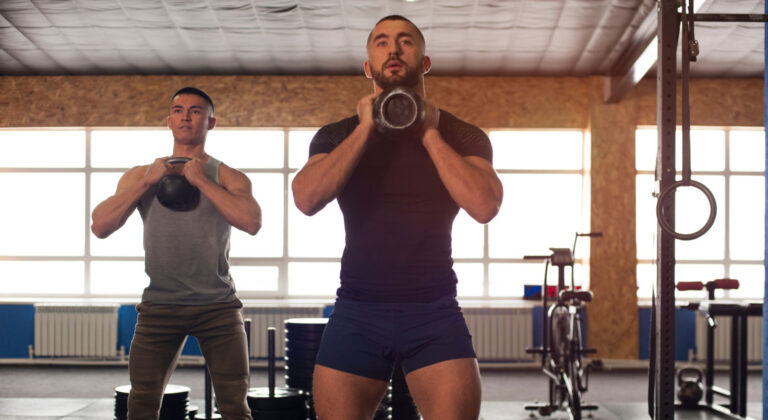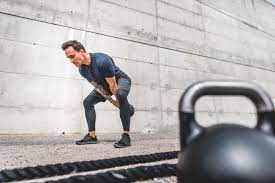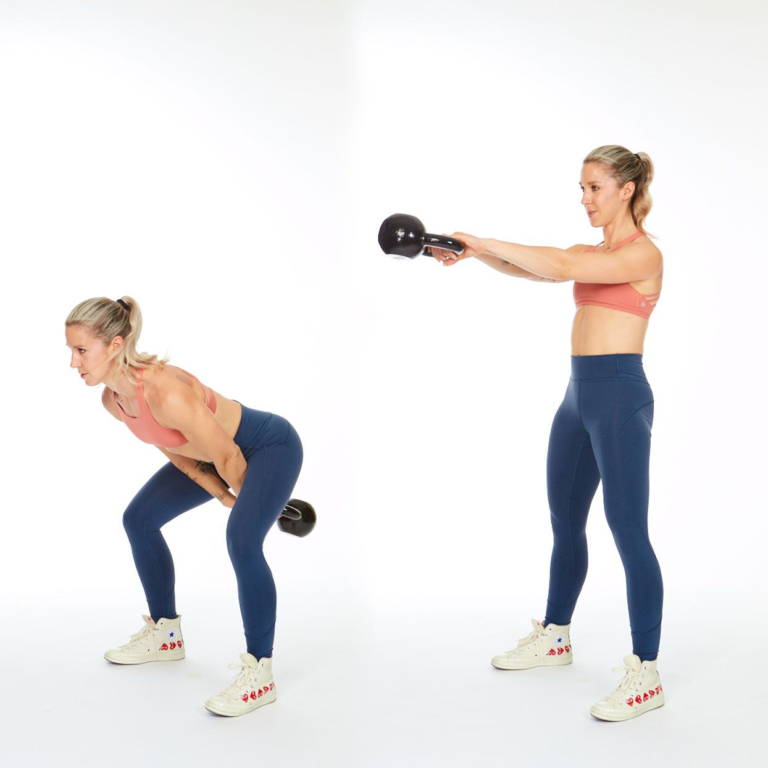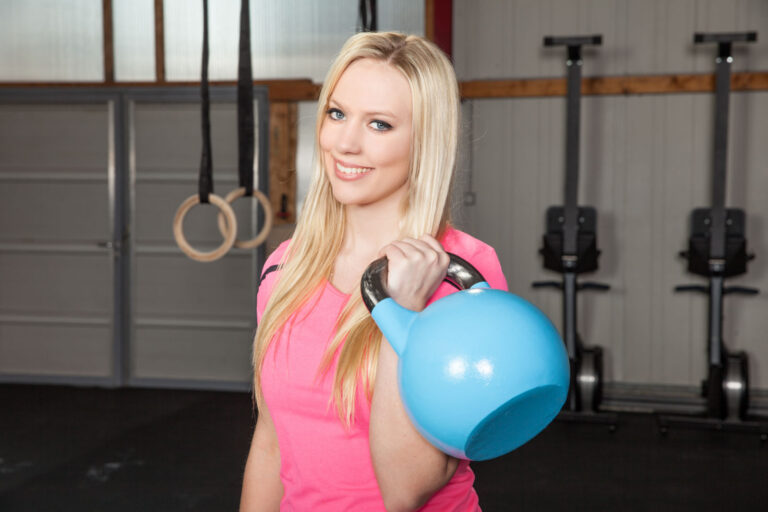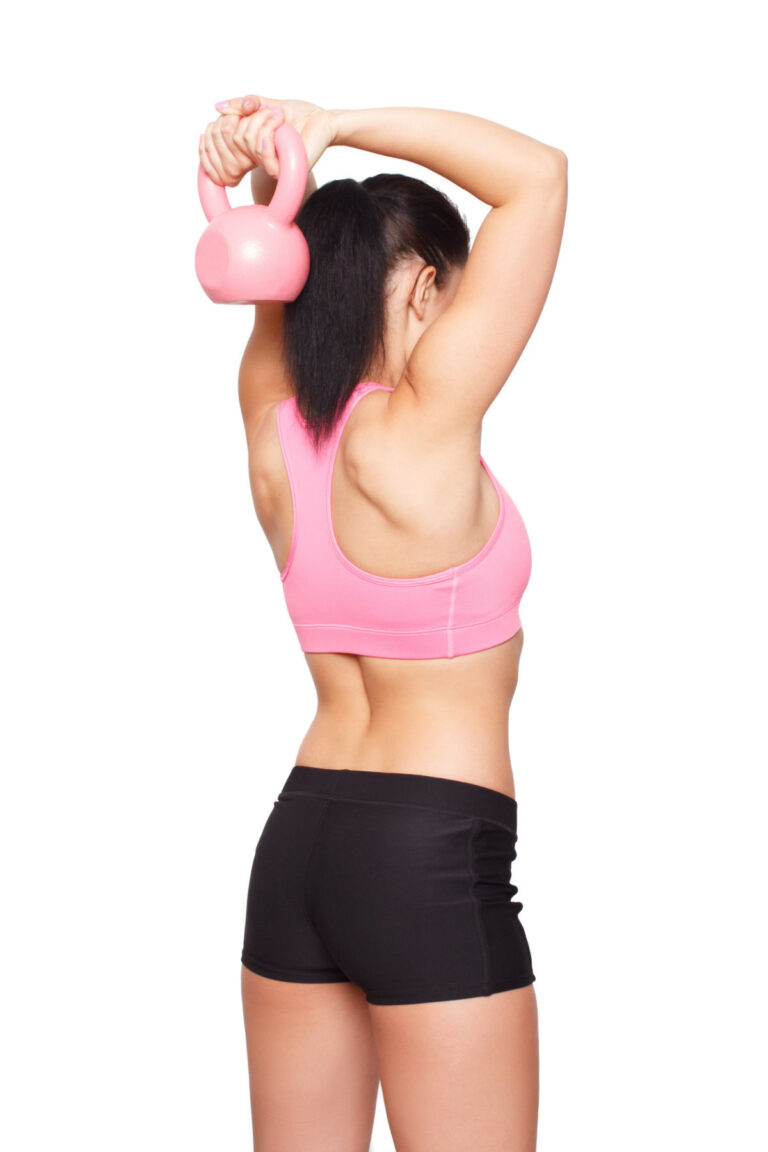Does Bench Press Work Biceps? Uncovering the Truth
The bench press is a popular exercise among fitness enthusiasts and athletes alike, known for its ability to effectively target the chest, shoulders, and triceps. However, there is a common misconception about whether or not the bench press works the biceps. To clarify this, it is essential to have a clear understanding of the mechanics of the bench press and its effects on the various muscle groups involved.
Does Bench Press Work Biceps?
In performing the bench press, the primary muscles targeted are the pectoralis major, anterior deltoid, and the triceps brachii. While the biceps play a stabilizing role in the exercise, their activation is minimal, and the bench press does not serve as a primary workout for bicep development.
To focus on building your biceps, other exercises such as curls or pull-ups would be more suitable. Nevertheless, incorporating bench press in your workout routine can still contribute to overall upper body strength and muscle balance.
Key Takeaways
- Bench press mainly targets chest, shoulders, and triceps but not biceps.
- Biceps have minimal activation during bench press and are not the primary focus of the exercise.
- Incorporate specific bicep exercises, like curls or pull-ups, for optimal bicep development.
Understanding Bench Press Mechanics
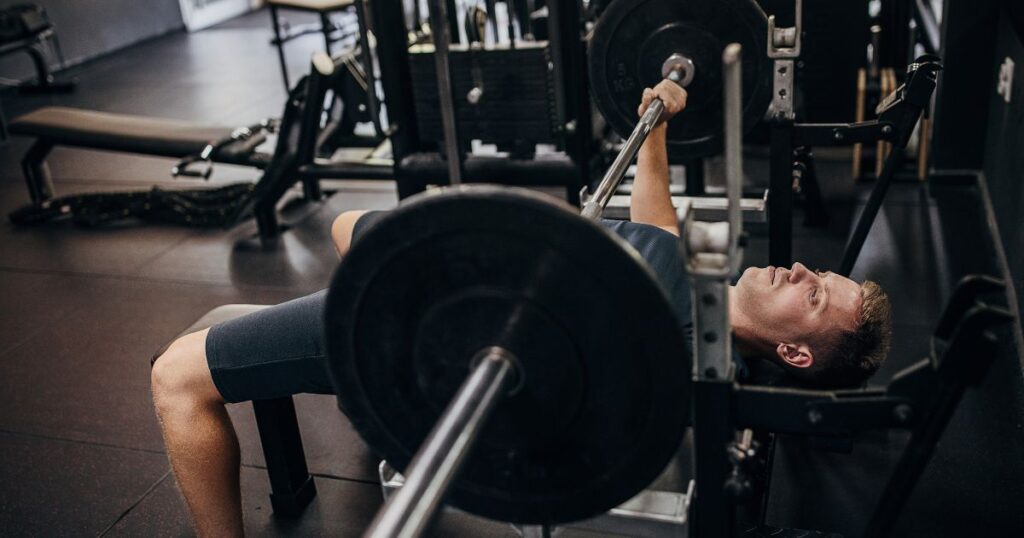
Anatomy of Bench Press
The bench press is a compound exercise that targets mainly the chest, shoulders, and triceps muscles, with the biceps playing a secondary supporting role. To perform the bench press, you’ll lie on your back on a bench with your feet firmly planted on the ground. You’ll need a barbell with the appropriate weight plates, and a rack to support the barbell at the starting position.
Range of Motion
As you perform the bench press, be mindful of the range of motion. Lower the barbell to your chest, making sure that your elbows are aligned with your wrists, and then push the barbell back up to the starting position. This full range of motion helps engage the targeted muscles and contributes to better upper body strength development.
Elbow Flexion and Extension
During the bench press, your elbows play an important role in the movement. As you lower the barbell towards your chest, the biceps undergo elbow flexion, bringing the forearm towards the upper arm. Conversely, when you push the barbell back up, the triceps muscles experience elbow extension, moving your forearm away from the upper arm. This flexion and extension of the elbow joint are essential to the bench press movement and allow your triceps and biceps to contribute to the exercise. However, keep in mind that the biceps are not the primary muscles being worked, and if you’re looking to specifically target your biceps, there are other exercises you can incorporate into your workout regimen.
Biceps Activation in Bench Press
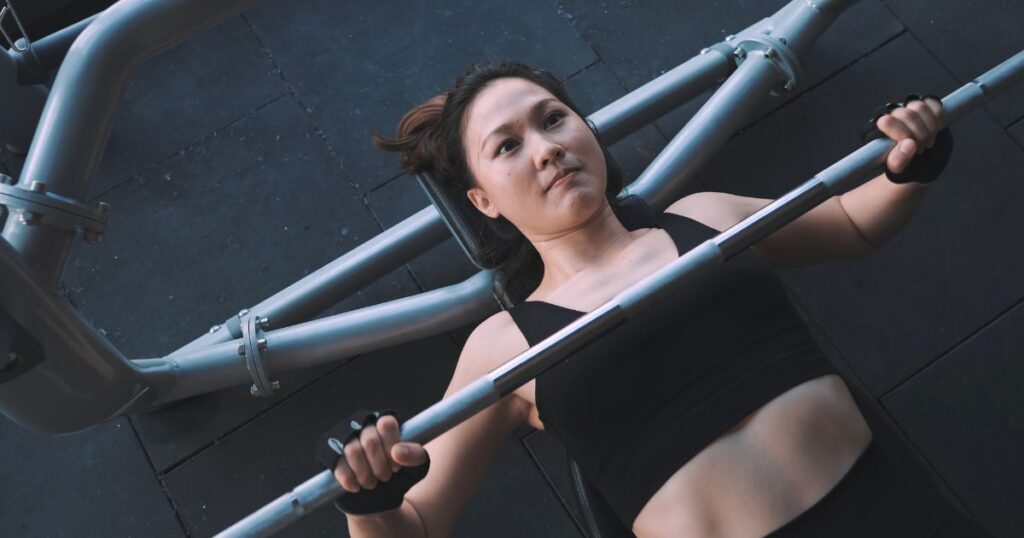
Muscle Groups Involved
During a bench press, several muscle groups in your upper body become activated. The primary muscles targeted are your chest (pectoral muscles) and shoulders, while your triceps play a significant assisting role in the movement. Although the bench press is not primarily designed to work your biceps, they do play a supportive role in stabilizing your shoulders and elbows throughout the exercise.
Biceps vs Triceps Activation
Your biceps are more active during the eccentric phase of the bench press movement, where the barbell is lowered towards your chest. This part of the exercise involves resisting the weight while maintaining control, and your biceps help provide stabilization. On the other hand, your triceps are highly activated during the concentric phase when you push the barbell away from your chest. This is because the bench press primarily targets chest and triceps pushing muscles rather than biceps pulling muscles.
In summary, your biceps are indirectly involved in the bench press exercise, providing support and stability. Although they may not be the primary focus, they still play an important role in maintaining proper form and ensuring a balanced and effective upper body workout.
Bench Press Variations and Biceps Involvement
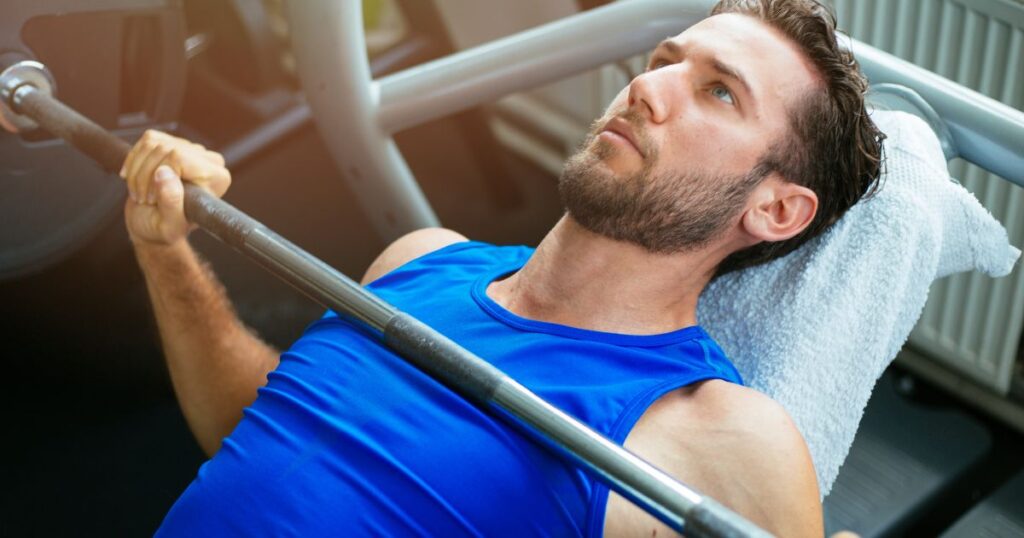
Incline Bench Press
The incline bench press targets your upper chest and front delts more than the flat bench press. Although your biceps are not the primary focus of this exercise, they do play a role as stabilizer muscles during the pressing motion. Your biceps will be engaged when keeping your shoulders and elbows stable. However, the incline bench press is primarily focused on other upper body muscles and not a significant biceps workout.
Decline Bench Press
The decline bench press emphasizes your lower chest and front delts, and your triceps are heavily involved. Similar to the incline bench press, your biceps do act as stabilizer muscles, but they are not the primary target. The decline bench press offers a variation on the regular bench press, but it still does not put considerable attention on your biceps.
Close Grip Bench Press
The close grip bench press differs from the standard bench press due to the positioning of your hands. By placing your hands closer together on the barbell, you increase the focus on your triceps. This variation can also engage your biceps slightly; however, the biceps are involved more in stabilizing your elbow extension rather than as the main working muscle. The close grip bench press serves as a better workout for your triceps than your biceps.
To sum it up, incline, decline, and close grip bench press variations primarily target various chest, front delt, and tricep muscles. While your biceps do play a role in stabilizing your upper body during these exercises, they are not the main focus. If you want to work your biceps specifically, it’s essential to include dedicated bicep exercises in your workout routine.
Exercises to Target Biceps
Curls
To effectively target your biceps, include various types of curls in your workout routine. For instance, bicep curls are a classic exercise to isolate and strengthen the bicep muscles. You can perform bicep curls with a barbell, which is known as barbell curls, or with dumbbells, called dumbbell curls.
Another variation to consider is hammer curls. This exercise targets both the long head of the bicep and the brachialis muscle, promoting overall bicep growth. Include hammer curls in your routine to work on different parts of your biceps and achieve your goals.
Rows
Rows play a functional role in developing your biceps as well. Integrating rows into your workout helps build mass in the biceps while also working your back muscles. There are several row variations to choose from, such as bent-over rows, cable rows, and dumbbell rows. Experiment with different types of rows to find which one best suits your preferences and goals.
Chin-ups
Lastly, chin-ups are an excellent exercise to target the biceps, mainly the long head of the muscle. Chin-ups involve gripping a pull-up bar with an underhand grip and pulling your body up until your chin is above the bar. The underhand grip places more emphasis on the biceps compared to other grip variations. Chin-ups not only promote bicep growth but also work on your upper back and shoulder muscles, making them an essential addition to your workout routine.
Combining Bench Press and Biceps Exercises
Workout Split Planning
When planning your workout split, consider incorporating both bench press exercises and biceps-specific exercises to maximize muscle development. Bench press primarily targets the pectoral muscles and indirectly works the biceps. Pairing bench press with dedicated bicep exercises can ensure a balanced upper body training regimen.
Balancing Exercises among Muscle Groups
To achieve a well-rounded workout, balance strength training and muscle development by incorporating exercises targeting all major muscle groups. In addition to bench press, include a variety of bicep exercises to create a comprehensive routine. Combining different types of exercises, such as powerlifting and bodybuilding, can help promote muscle growth and improve overall strength.
- Bench press: focuses on chest, shoulders, and triceps
- Biceps exercises: curl variations (dumbbell, barbell, hammer), chin-ups, and cable curls
Training Frequency and Intensity
Developing an effective workout schedule involves finding the right balance between training frequency, intensity, and recovery time. Your personal goals, such as mixing strength and muscle growth or prioritizing shoulder health, will determine your ideal training frequency and intensity.
- Beginners: Start with lighter weights and higher repetitions to build foundational strength before increasing intensity
- Intermediate to advanced: Adjust your training volume and intensity, focusing on challenging your muscles without overloading them.
- Avoiding overtraining: Ensure proper recovery periods between workouts to prevent injury and stagnation in your progress
For the best results, consider working with a personal trainer or utilizing coaching services to create a custom program tailored to your specific goals and needs. They can help you optimize your bench press and bicep training routine to achieve balance and maximize results.
Frequently Asked Questions
Does the bench press target triceps?
Yes, the bench press targets your triceps. While it is primarily a compound exercise focusing on the chest, shoulders, and triceps, your triceps play a crucial role in extending your elbows during the movement.
Which muscles are activated during bench press?
During a bench press, you activate multiple muscles, including the pectoralis major (chest), anterior deltoids (front shoulders), and triceps brachii (back of your upper arm). In addition, secondary muscles such as the biceps and serratus anterior help stabilize the movement.
Is incline bench press beneficial for biceps?
The incline bench press is primarily aimed at targeting the upper chest and front shoulders. While it doesn’t specifically target your biceps, they do act as stabilizers during the exercise. However, if you want to focus on biceps development, you should consider exercises like curls.
How does bench press affect the chest muscles?
The bench press is an excellent exercise for developing your chest muscles. During the movement, your pectoralis major engages to bring your arms together and lift the weight. When performed with proper form, the bench press can help build both size and strength in the chest area.
Can bench press increase forearm strength?
While the bench press is not specifically designed to target forearm muscles, your forearms contribute to grip strength during the exercise. Increasing your grip strength can help with your overall bench press performance. If increasing forearm strength is your main goal, you might want to include specific forearm exercises, such as wrist curls, in your routine.
Do bench presses contribute to arm growth?
Bench presses can indeed contribute to arm growth. Although the primary focus is on your chest, shoulders, and triceps, the bench press still helps develop your arms because both your biceps and triceps are engaged in the movement. However, to maximize arm growth, you should also include isolation exercises that target your biceps and triceps directly.
The Final Rep
In conclusion, the bench press is a powerful compound exercise that primarily targets the chest, shoulders, and triceps, with the biceps playing a secondary, stabilizing role. While the bench press does engage the biceps to some extent, it is not the ideal exercise for those seeking to primarily develop and strengthen their biceps. The biceps are more actively involved in exercises such as curls, rows, and chin-ups.
Therefore, if your goal is to build your biceps, it’s recommended to incorporate these exercises into your workout routine. However, the bench press remains an essential part of a balanced upper body training regimen, contributing to overall strength and muscle balance. Remember, a well-rounded workout routine that targets all major muscle groups is key to achieving optimal fitness results.

